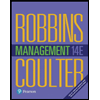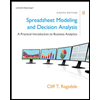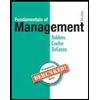12. is the systematic gathering, recording, and analyzing of data about the merchandising of goods and services. a. Competitor analysis b. Market research c. Competitive intelligence d. SWÓT analysis In which stage of the product life cycle does competition become more aggressive with declining prices and profits? a. Introduction b. Growth c. Maturity d. Decline 13. Innovation 1. Research targeted at increasing knowledge for a specific application or need is called basic research. a. True b. False
12. is the systematic gathering, recording, and analyzing of data about the merchandising of goods and services. a. Competitor analysis b. Market research c. Competitive intelligence d. SWÓT analysis In which stage of the product life cycle does competition become more aggressive with declining prices and profits? a. Introduction b. Growth c. Maturity d. Decline 13. Innovation 1. Research targeted at increasing knowledge for a specific application or need is called basic research. a. True b. False
Chapter1: Taking Risks And Making Profits Within The Dynamic Business Environment
Section: Chapter Questions
Problem 1CE
Related questions
Question
I need the answers to these questions for the Entrepreneurship and Innovation course

Transcribed Image Text:3:06
G ull ul 5D
SO
Rea...
promotion, and place into an integrated marketing program
b. process of identifying and evaluating the various layers of a
market
|Page4
c. part of the total market toward which promotional efforts
are concentrated
d. process of acquiring customers that involves obtaining
individual-level consumer information
12.
is the systematic gathering, recording, and analyzing
of data about the merchandising of goods and services.
a. Competitor analysis
b. Market research
c. Competitive intelligence
d. SWOT analysis
In which stage of the product life cycle does competition
become more aggressive with declining prices and profits?
a. Introduction
b. Growth
c. Maturity
d. Decline
13.
Innovation
1. Research targeted at increasing knowledge for a specific
application or need is called basic research.
a. True
b. False
2. The terms "research" and "development" represent different kinds
of investment in innovation-related activities.
a. True
b. False
3. The science-push approach to research and development argued
that innovation was driven by the perceived demand of potential
users.
a. True
b. False
4. Erison Group, an advertising company, wants to hire a creative
head. Who among the following would be best suited for this
position?
a. An individual who completely adheres to the existing logic
and paradigms and has extensive knowledge of the field
b. An individual who has low tolerance for ambiguity and
avoids taking risks
|Page5
A- :-di..:J..-L ...L- L-- - ---L----- J----- - I.--...--- -

Transcribed Image Text:3:06 O
G ull ul 5D
SO
Rea..
|Page5
c. An individual who has a moderate degree of knowledge of
the field but is intrinsically motivated
d. An individual who prefers to look at problems in conventional
ways
5. Which of the following is the correct sequence of steps for the
science-push approach to research and development?
a. Customers express an unmet need, the R&D team develops
the product to meet that need, the product is manufactured,
and finally the marketing team promotes the product.
b. Scientific discovery leads to an invention, the engineering
team designs the product, it is then manufactured, and finally
the marketing team promotes it.
c. The marketing team discovers a need, R&D comes up with the
product concept that is refined by the engineering team, the
manufacturing team then produces it, and finally the product
is sold.
d. The manufacturing team sees a way to improve a product,
the engineering team redesigns it, and finally the marketing
team creates awareness about the improved product.
are regional groups of firms that have a connection to a
common technology and may engage in buyer, supplier, and
complementor relationships, as well as research collaboration.
a. Technology transfer offices
b. Technology incubators
c. Strategic business units
d. Technology clusters
6.
7. Technological spillover is a positive externality from R&D resulting
from the spread of knowledge across organizational or regional
boundaries.
а. True
b. False
Chapter 1
1.
nurture young firms and help them to survive and grow
during the startup period when they are most vulnerable.
a. Successful graduates
b. Business incubators
c. International trade organizations
d. Conglomerates
|Page 6
2. Which of the following best describes one of the contributions of
small businesses?
a. They are sources of new ideas or services that larger
businesses may be unable to provide.
b. They provide larae capital aains to the owners.
Expert Solution
This question has been solved!
Explore an expertly crafted, step-by-step solution for a thorough understanding of key concepts.
This is a popular solution!
Trending now
This is a popular solution!
Step by step
Solved in 4 steps

Knowledge Booster
Learn more about
Need a deep-dive on the concept behind this application? Look no further. Learn more about this topic, management and related others by exploring similar questions and additional content below.Recommended textbooks for you

Understanding Business
Management
ISBN:
9781259929434
Author:
William Nickels
Publisher:
McGraw-Hill Education

Management (14th Edition)
Management
ISBN:
9780134527604
Author:
Stephen P. Robbins, Mary A. Coulter
Publisher:
PEARSON

Spreadsheet Modeling & Decision Analysis: A Pract…
Management
ISBN:
9781305947412
Author:
Cliff Ragsdale
Publisher:
Cengage Learning

Understanding Business
Management
ISBN:
9781259929434
Author:
William Nickels
Publisher:
McGraw-Hill Education

Management (14th Edition)
Management
ISBN:
9780134527604
Author:
Stephen P. Robbins, Mary A. Coulter
Publisher:
PEARSON

Spreadsheet Modeling & Decision Analysis: A Pract…
Management
ISBN:
9781305947412
Author:
Cliff Ragsdale
Publisher:
Cengage Learning

Management Information Systems: Managing The Digi…
Management
ISBN:
9780135191798
Author:
Kenneth C. Laudon, Jane P. Laudon
Publisher:
PEARSON

Business Essentials (12th Edition) (What's New in…
Management
ISBN:
9780134728391
Author:
Ronald J. Ebert, Ricky W. Griffin
Publisher:
PEARSON

Fundamentals of Management (10th Edition)
Management
ISBN:
9780134237473
Author:
Stephen P. Robbins, Mary A. Coulter, David A. De Cenzo
Publisher:
PEARSON